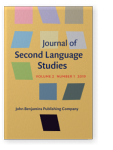Vol. 2:1 (2019) ► pp.93–118
What is effective second language exposure and how does it relate to content-based instruction and language across the curriculum?
Second language acquisition cannot take place in the absence of exposure to input. However, despite extensive L2 instruction and/or learning content subjects in L2, many struggle to communicate adequately in their L2 in social and/or academic contexts. A clearer delineation of the concept of ‘exposure’, which requires a review of relevant language acquisition theories and findings, is needed. As such, substantial bodies of work in L2 acquisition by well-known language educators, namely Jim Cummins (‘BICS’ and ‘CALP’), Stephen Krashen (‘Comprehensible Input Hypothesis’), Michael Long (Interaction Hypothesis) and Merril Swain (Output Hypothesis) are reviewed. A review is also made of relevant neuroscience research. Two educational approaches, Content-based instruction (CBI) and Language across the curriculum (LAC), are discussed in relation to the insights obtained, with special reference to contexts influenced by Confucian heritage culture (CHC). To allow subject networking to take place, school managers/L2 policy makers need to actively revamp the curriculum.
Article outline
- Introduction
- The major bodies of work in L2 acquisition
- Exposure from the Foreign Language Educators’ perspective I: Cummins – BICS and CALP
- Exposure from the Foreign Language Educators’ perspective II: Krashen – The Comprehension Hypothesis and narrow input
- Exposure from the social interaction perspective
- Exposure from the findings of neuroscience
- Approach embodying insights of L2 acquisition I: Content-based instruction (CBI)
- Approach embodying insights of L2 acquisition II: Language across the curriculum (LAC)
- Possible challenges of CBI and LAC in Confucian heritage culture (CHC)
- Conclusions and practical implications
- Acknowledgements
- Notes
-
References
